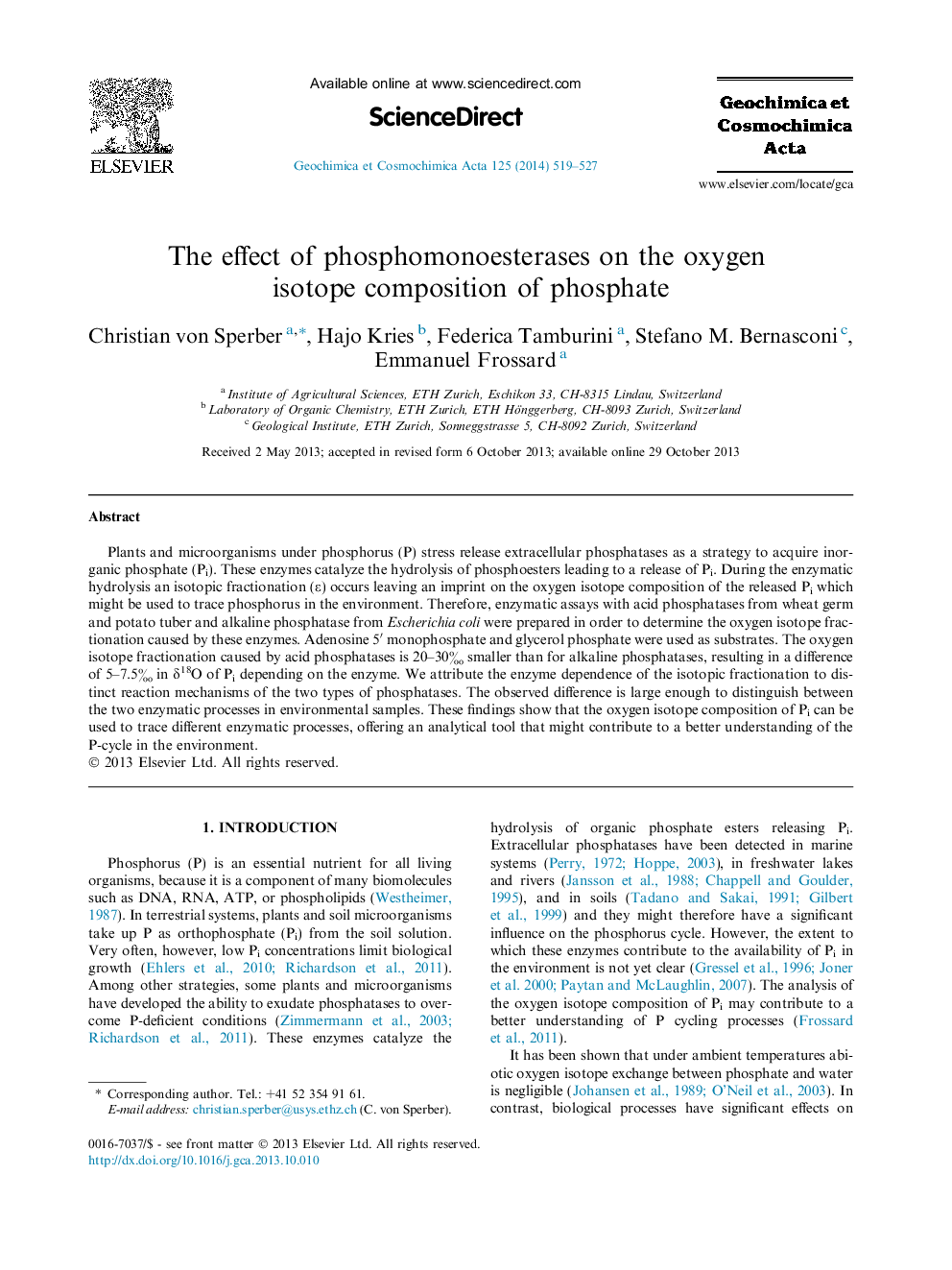| Article ID | Journal | Published Year | Pages | File Type |
|---|---|---|---|---|
| 6438707 | Geochimica et Cosmochimica Acta | 2014 | 9 Pages |
Abstract
Plants and microorganisms under phosphorus (P) stress release extracellular phosphatases as a strategy to acquire inorganic phosphate (Pi). These enzymes catalyze the hydrolysis of phosphoesters leading to a release of Pi. During the enzymatic hydrolysis an isotopic fractionation (ε) occurs leaving an imprint on the oxygen isotope composition of the released Pi which might be used to trace phosphorus in the environment. Therefore, enzymatic assays with acid phosphatases from wheat germ and potato tuber and alkaline phosphatase from Escherichia coli were prepared in order to determine the oxygen isotope fractionation caused by these enzymes. Adenosine 5Ⲡmonophosphate and glycerol phosphate were used as substrates. The oxygen isotope fractionation caused by acid phosphatases is 20-30Ⱐsmaller than for alkaline phosphatases, resulting in a difference of 5-7.5Ⱐin δ18O of Pi depending on the enzyme. We attribute the enzyme dependence of the isotopic fractionation to distinct reaction mechanisms of the two types of phosphatases. The observed difference is large enough to distinguish between the two enzymatic processes in environmental samples. These findings show that the oxygen isotope composition of Pi can be used to trace different enzymatic processes, offering an analytical tool that might contribute to a better understanding of the P-cycle in the environment.
Related Topics
Physical Sciences and Engineering
Earth and Planetary Sciences
Geochemistry and Petrology
Authors
Christian von Sperber, Hajo Kries, Federica Tamburini, Stefano M. Bernasconi, Emmanuel Frossard,
